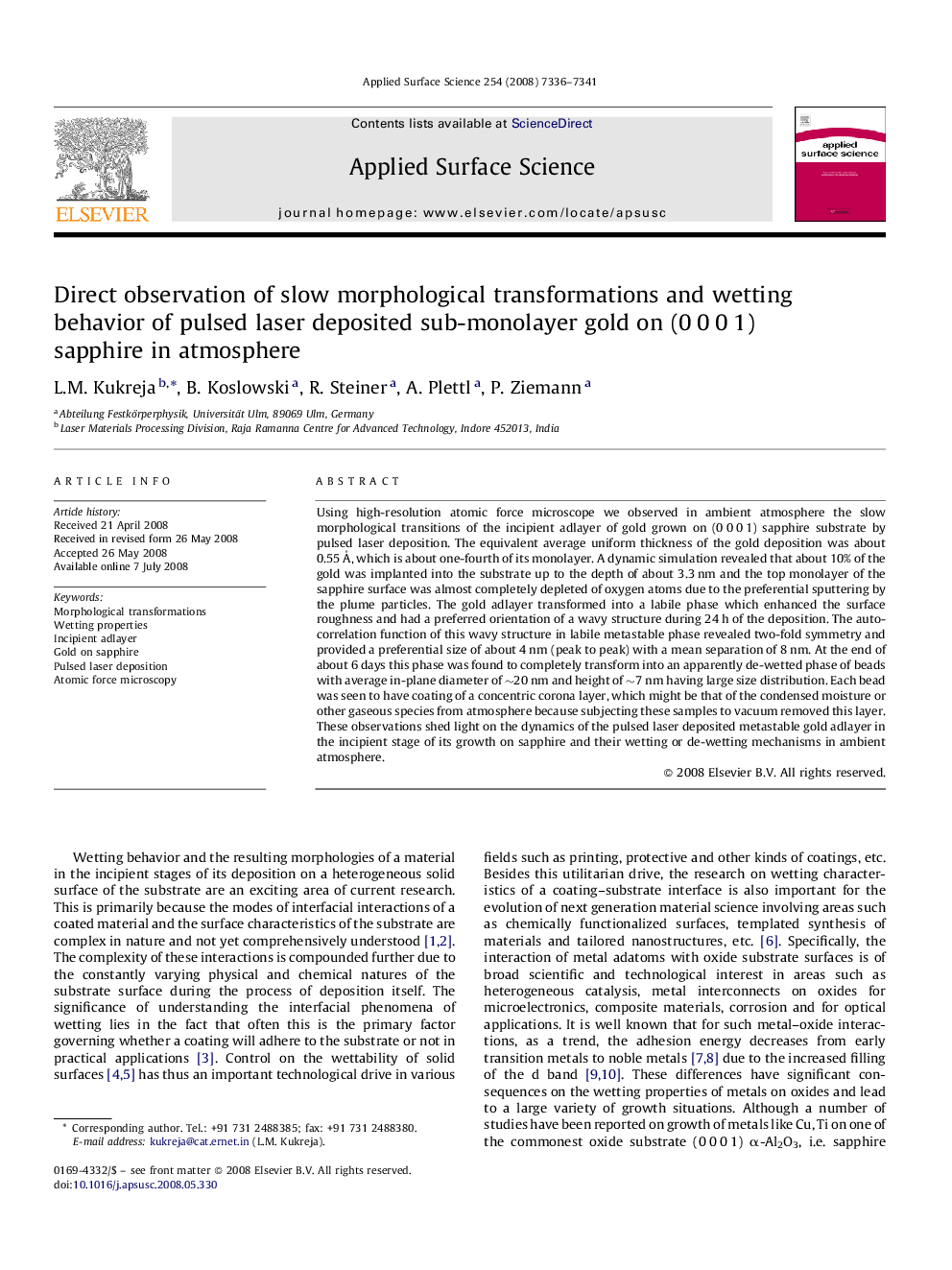| Article ID | Journal | Published Year | Pages | File Type |
|---|---|---|---|---|
| 5361091 | Applied Surface Science | 2008 | 6 Pages |
Using high-resolution atomic force microscope we observed in ambient atmosphere the slow morphological transitions of the incipient adlayer of gold grown on (0Â 0Â 0Â 1) sapphire substrate by pulsed laser deposition. The equivalent average uniform thickness of the gold deposition was about 0.55Â Ã , which is about one-fourth of its monolayer. A dynamic simulation revealed that about 10% of the gold was implanted into the substrate up to the depth of about 3.3Â nm and the top monolayer of the sapphire surface was almost completely depleted of oxygen atoms due to the preferential sputtering by the plume particles. The gold adlayer transformed into a labile phase which enhanced the surface roughness and had a preferred orientation of a wavy structure during 24Â h of the deposition. The auto-correlation function of this wavy structure in labile metastable phase revealed two-fold symmetry and provided a preferential size of about 4Â nm (peak to peak) with a mean separation of 8Â nm. At the end of about 6 days this phase was found to completely transform into an apparently de-wetted phase of beads with average in-plane diameter of â¼20Â nm and height of â¼7Â nm having large size distribution. Each bead was seen to have coating of a concentric corona layer, which might be that of the condensed moisture or other gaseous species from atmosphere because subjecting these samples to vacuum removed this layer. These observations shed light on the dynamics of the pulsed laser deposited metastable gold adlayer in the incipient stage of its growth on sapphire and their wetting or de-wetting mechanisms in ambient atmosphere.
